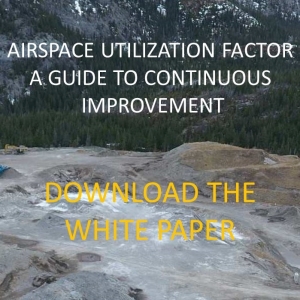Improve Your Airspace Utilization Factor
What is Airspace Utilization Factor (AUF)?
“Airspace utilization factor” (AUF) (tons of waste per cubic yard of landfill airspace) means the effective density of waste material in the landfill. The AUF is recorded as the total weight of waste material passing over the landfill scales that is placed in a known volume of landfill airspace in a given time period. (California Code of Regulations Definition)
Measure What Matters
Management guru John Doerr wrote a book titled Measure What Matters and popularized the simple goal setting technique of OKRs (Objectives and Key Results). This concept is critical to improving your landfill’s AUF because if nothing is measured; nothing changes
Lean
Continuous improvement is not a “Dishes are done so grab the tv remote” solution. Neither is managing a landfill… It’s the process of making change, measuring the impact of that change, learning and repeating.

DO

Making change is both exciting and intimidating. There are numerous tools and approaches that can impact AUF. They key is to choose solutions that work for YOUR landfill. Perhaps it’s the right time to make a large capital investment. Conversely if it’s the middle of the fiscal year, perhaps only small operational changes can be made.
Measure

Now that you’ve implemented changes it’s time to measure the result!
- Did AUF improve?
- If so, how much?
First a quick step backward to the start. Before making any changes, take stock of the current situation.
- What is the current AUF?
- Is it improving or deteriorating?
- Does it vary depending on the season?
Learn

- Did the change yield a positive ROI?
- Did realized gains match expected outcomes?
- Were there surprises?
Evaluating the impact of the change is a great opportunity to engage staff and provide talking points for the next Board meeting.

Small incremental improvements add up to big overall changes in operational excellence.
One landfill who regularly measured their AUF increased density by 15%.
If airspace were valued at a moderate $50m3 Achieving a 10% increase in density would save a landfill processing 10,000 tons a year $50,000 dollars annually.
